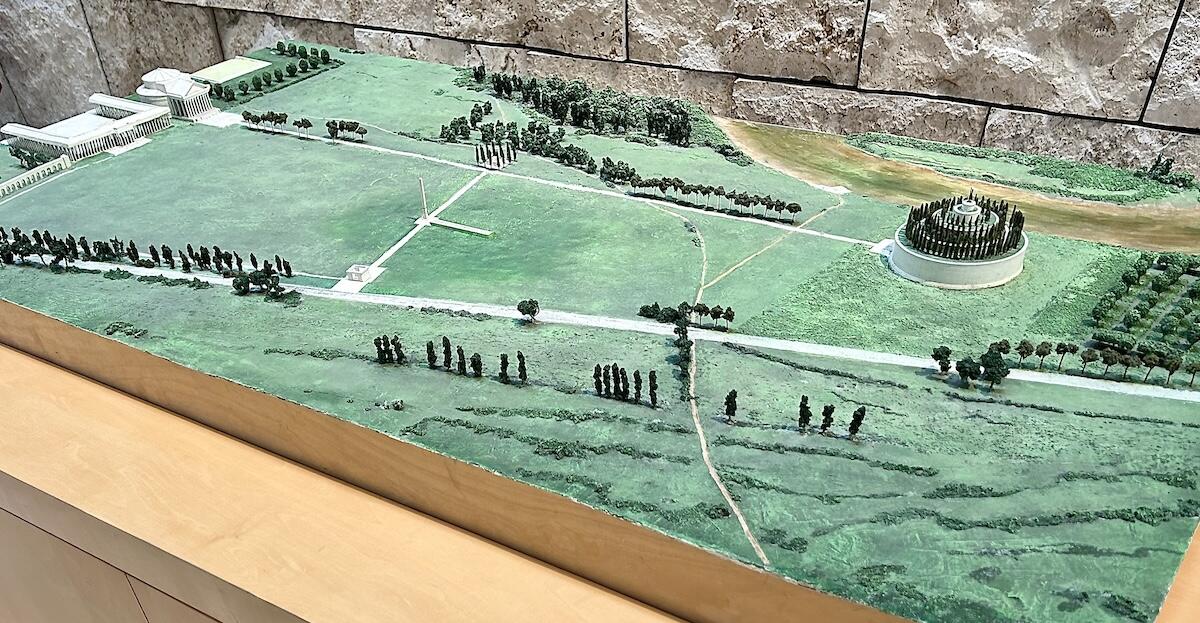What was the Ara Pacis used for?

The Ara Pacis Augustae (Altar of Augustan Peace) was a monumental structure commissioned by the Roman Senate in 13 BCE to celebrate the victorious return of Emperor Augustus from his campaigns in Hispania and Gaul. It served a dual purpose for Augustus and his regime: civic ritual and propaganda. It helped to ease notions of autocracy and dynastic succession that might otherwise be unpalatable to traditional Roman culture, and stood as a symbol of the peace and stability that Augustus had brought to the Roman Empire following decades of civil war

Primarily, the Ara Pacis served as a site for pagan religious ceremonies (the altar predates the Catholicism of Rome) - specifically it was used for the public blood sacrifices of animals to the gods, especially the Roman goddess Pax, the personification of peace. These sacrifices, conducted by the Vestal Virgins and Roman magistrates, were intended to honor the peace and prosperity that had been established under Augustus's rule. The altar's design incorporated drain holes to dispose of the blood and other fluids from animal sacrifices, emphasizing its role in the religious and ritual life of Rome.
The Ara Pacis was also a potent symbol of Augustus's political propaganda. The monument, located in the Campus Martius (or Field of Mars) - a district filled with structures celebrating Rome's military might - celebrated the Pax Romana, the peace Augustus had ushered in after years of conflict. Its friezes and reliefs depicted Augustus's family, linking the imperial house to the prosperity of Rome. These images not only reinforced Augustus's role as a military victor but also as a bringer of peace and stability, legitimizing his power and the new imperial order he had established. The Ara Pacis was therefore more than a structure for sacrifices; it was a visual declaration of Augustus's authority and the enduring peace that he claimed to have brought to the empire.
The altar's sculptural decoration included a series of intricate reliefs that conveyed powerful political and symbolic messages. Scenes of the imperial family, including Augustus, his wife Livia, and their children reinforced their central role in the peace and prosperity of the Roman state. Other reliefs featured mythological themes, such as depictions of Roma, the personification of the city of Rome, and Tellus (Earth), representing fertility and abundance. The garlands and floral motifs on the altar's panels further symbolized the bounty and prosperity brought by the peace that Augustus had established.
The Ara Pacis was also a commemorative monument, honoring Augustus's military victories and his role as the founder of a new era of peace. The reliefs depicted not only Augustus's triumphs but also the idealized vision of Rome's future -- a harmonious society under the leadership of the imperial family. Located in a public space, the altar was a visible reminder to Romans of their emperor's power and the benefits of his rule.
Comments:
Last update:
What's New?
-

Experience The New Rome
Jan 28, 2025
-

History of The Ara Pacis Museum
Jan 6, 2025
-

What was the Ara Pacis used for?
Dec 22, 2024
-

Roma Pass
Dec 21, 2024
-

History of the Ara Pacis Altar Video
Dec 20, 2024
Top experiences in and around Rome:
Some links to external websites may be affiliate links (hotel bookings, guide books, activities, etc.). Using these services helps to support our efforts here with no additional costs to the user (you!).